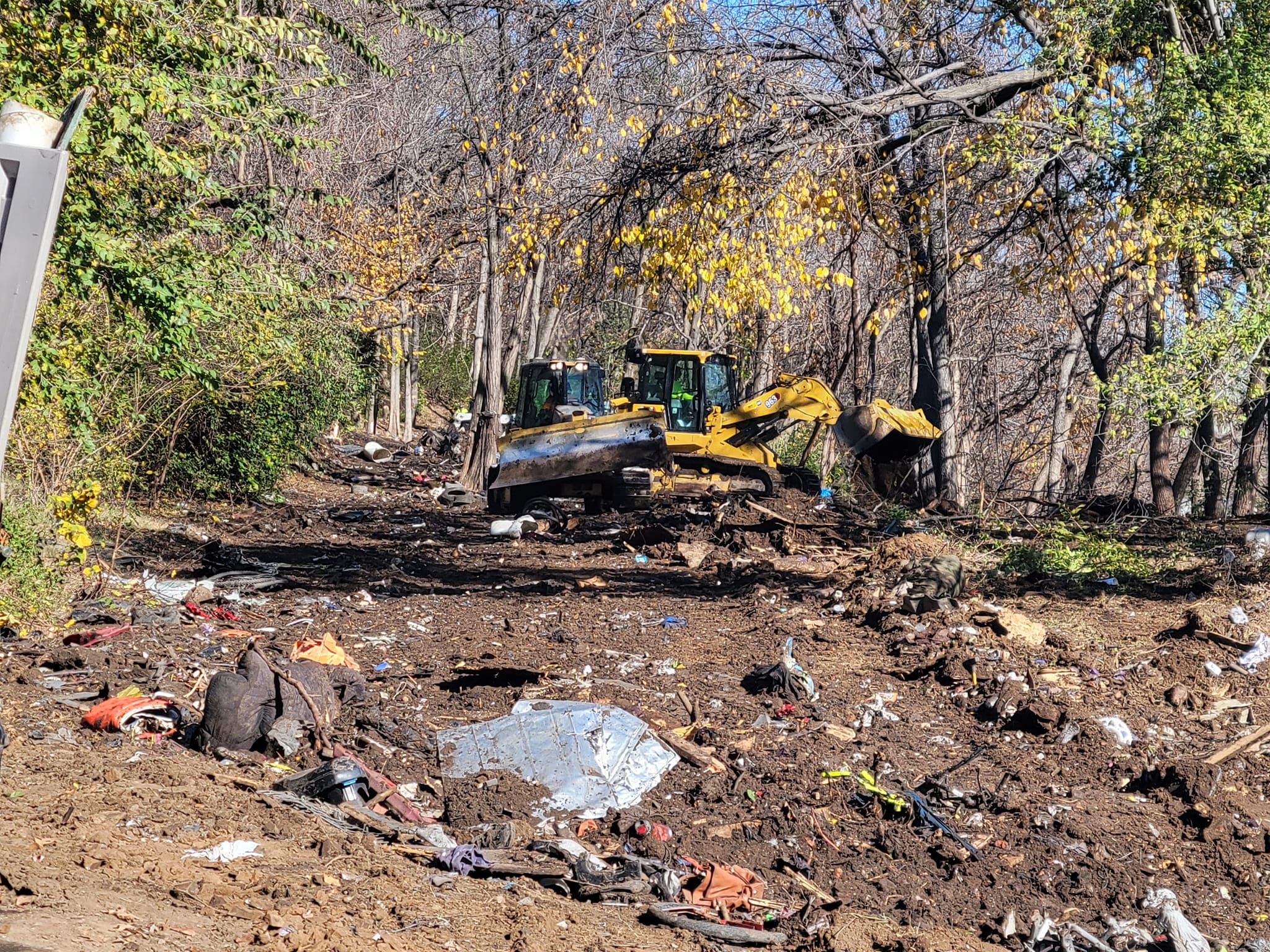
Abby Hoover
Managing Editor
Pedestrians and business owners on Independence Avenue will soon benefit from the installation of additional recycling bins following a grant awarded to the Independence Avenue Community Improvement District (CID).
The grant, the second of its kind that the CID has received from the Mid American Regional Council (MARC) Solid Waste Management District, will help purchase approximately 20 more recycling bins.
Grant Administrator Nadja Karpilow, who is an Environmental Planner for the Solid Waste Management District, explained that the grant can be used for waste reduction, reuse and recycling projects.
“We have an open call for grants every year, and the CID actually got a grant from us, I believe it was 2018, to put out the containers that are there now,” Karpilow said. “They submitted an application for this year to add to that program, to add more containers.”
The CID has permission from the Kansas City Area Transportation Authority (KCATA) and the Public Works Department to install them along Independence Avenue, and is working with these departments to determine where to place the new containers.
“I have really encouraged them to make sure that they are placed next to an existing trash can, or frankly, if there isn’t a trash can to add a trash can,” Karpilow said. “It’s just going to get used as trash if it’s not next to one.”
Karpilow believes that the biggest challenge with public recycling is contamination from trash. She said it has been difficult on Independence Avenue with the containers that are there.
“It’s been tough,” Karpilow said. “With the containers that are there, they get contaminated, and I don’t know that people are learning about recycling, to be completely honest with you. When it’s paired with a trash can I think it goes into people’s brains that they have a choice.”
The CID is using the $10,923 in grant funding to buy and install 20 recycling bins, and graphics on all of the new and existing recycling bins, said CID Director of Operations Mike Spady, who is also the Economic Development Ambassador for the Northeast Chamber of Commerce.
“We’ll be adding additional recycling bins, and we’ll also be installing educational signage on both the new and the old recycling bins that show what does, what doesn’t go in there,” Spady said. “Hopefully it will help keep the recycling from being contaminated.”
The new stickers will be graphically oriented, versus written, to make the information accessible for people who don’t read English or have lower levels of education.
“The signs will have pictures of plastic, aluminum and paper, and then everything else will have a line through them,” Spady said.
The 10 Avenue Ambassadors on staff will add emptying the new recycling bins to their responsibilities. The CID does about 10 tons of recycling per year now, which Spady hopes will double with the added bins.
“We service them at least a couple times a week and most of the time they’re full or overflowing, so there is a lot of stuff that goes in there,” Spady said. “Unfortunately, some of that is trash that contaminates the recycling.”
Currently, due to the high level of contamination, the Avenue Ambassadors separate the recycling from the trash, which takes additional time. Spady hopes the additional bins will cut down on that time and contamination.
“If you don’t put it out there, it’s all going to go to the landfill,” Karpilow said. “One of the things that the CID does, they actually take that container of recyclables and sort through it and make sure it doesn’t have trash so that when the recycling hauler comes, they can get cleaner materials and actually recycle it.”
Spady said the recycling bins and new signage will be placed in November after locations have been determined by the Parks Department, the CID and Public Works. He is meeting with Parks and Public Works this week to discuss the locations and get their input on high-traffic locations around bus stops and existing trash cans.
The Parks Department recently installed new trash cans on Independence Avenue and adjoining Parks properties, and Spady hopes more will come soon from Public Works.
As far as keeping the neighborhood clean, Karpilow said she doesn’t think it will make a big dent while illegal dumping activity persists. She said grant funds can be used to address illegal dumping, but she hasn’t seen any project come through that deals with that.
The Solid Waste Management District grant funds can be used for food waste composting; waste reduction and recycling education; development of new markets, expansion of existing markets and local manufacturing of products from recovered materials; waste reduction and reuse; hard-to-recycle items; organics management; construction and demolition waste; and business and multi-family dwelling recycling.
“None of our dollars can be spent on trash,” Karpilow said, adding that the grant can’t buy trash cans or fund dumpsters for neighborhood cleanups.
MARC is a council of local government focused on regional planning by emphasizing collaboration and efficiency. The State of Missouri is divided up into 20 solid waste management districts. The Kansas City MARC Solid Waste Management District funds can only be spent on the Missouri side in the five metro counties: Clay, Ray, Jackson, Platte and Cass.
The Solid Waste Management District has a separate board from MARC, and with no enforcement power, they focus on education. In addition to the grant program, they manage recyclespot.org, where people can look up where to recycle bulky or difficult items.
The district also manages the regional household hazardous waste collection program throughout 36 communities so residents can safely dispose of their chemicals like paint thinner, lawn and garden chemicals, and batteries.

















